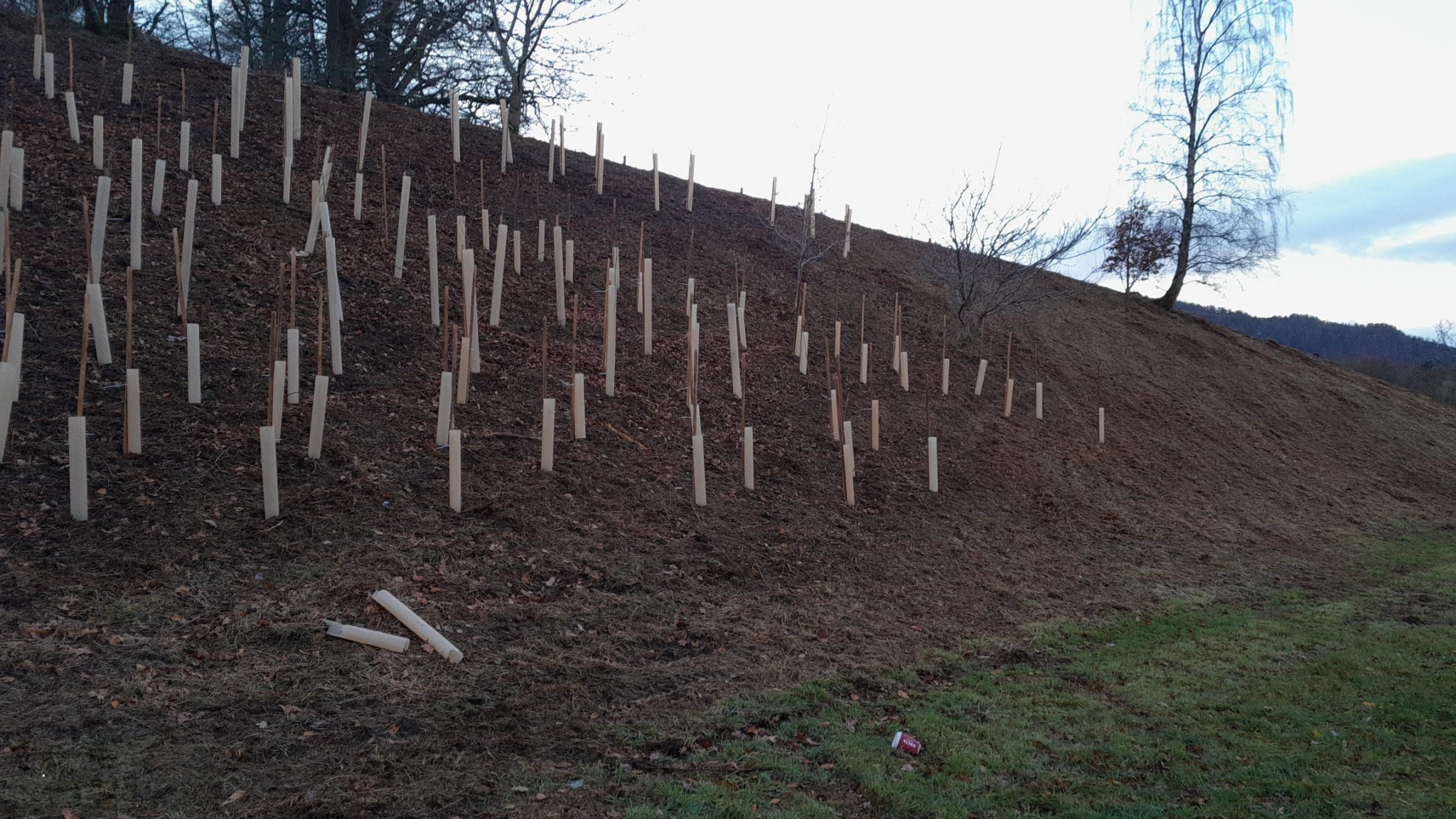
BEAR Scotland have undertaken a project to replant native trees in two locations along the A9. The project follows an extensive tree felling exercise undertaken to remove trees affected by ash dieback, a serious fungal disease that threatens the health and safety of Scotland’s woodlands.
The replanting initiative on the A9 near Bankfoot and south of Birnam aims to introduce a diverse range of native species, including silver birch, hazel, common hawthorn, blackthorn, elder and rowan trees to the cleared areas. These species were carefully selected to create a resilient and sustainable woodland environment.
Operatives scrapped a traditional grid pattern in favour of random, varied spacing between plants to give a more natural appearance and small groups of the same species were planted together to help reduce competition between the different types of trees.
Much of the North West trunk road network, which is managed and maintained by BEAR Scotland on behalf of Transport Scotland, is surrounded by woodland. Infected trees within falling distance of roads, footpaths, active travel routes, infrastructure, properties, and public areas pose a serious threat. Therefore, BEAR Scotland have committed to removing any trees that have been identified as having ash dieback in high-risk areas to ensure both the safety of the road network and its users, as well as the stability of surrounding trees.
Ian Stewart, BEAR Scotland’s North West Representative said: “We are proud to play a part in restoring areas of Scotland’s natural environment following an extensive felling programme to remove infected ash trees.
“By planting a diverse range of native trees, we aim to create a resilient and thriving landscape alongside our trunk road network.”
The replanted vegetation will be monitored to ensure the success of the restored areas.
Find out more about BEAR Scotland’s Ash Dieback plan here.